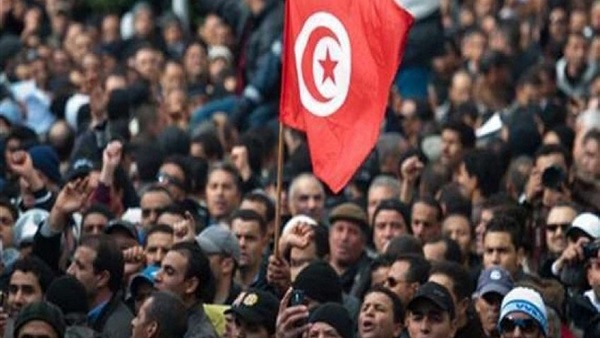Taking a step back: Brotherhood's tactic will not endure in Tunisia

Contrary to
the escalating line adopted by Ennahda following the decisions of Tunisian
President Kais Saied that were issued on Monday, July 26, in which he sought to
dismiss the government and freeze parliament, the Brotherhood-affiliated
movement quickly resorted to the strategy of “taking a step back” as an attempt
to avoid further losses.
The movement
realized that freezing parliament is not the biggest loss, as Saied is
motivated by files and information about Ennahda corruption, as long as he
waves it in his speeches, and he wants to go to the stage of dissolving
parliament and then eliminating any presence of Ennahda in power. But at this
stage he only has the freezing step, as stipulated in Article 80 of the
Tunisian constitution.
The movement
seeks to absorb the crises of the stage and not escalate in order to cut off
the path for the president, who is paving the scene in this period to find a
legal justification that permits the dissolution of parliament.
Legal
position for dissolution
Ennahda has
a long list of accusations against its performance amounting to legal
violations, the severity of which calls for the removal of Ennahda from the
scene.
These
accusations range from involvement in corruption cases, obtaining foreign
funds, and involvement in the assassinations of Tunisian politicians Chokri
Belaid and Mohamed Brahmi, whose defenders accuse the movement of being behind
their killing.
Because of
the seriousness of the repercussions of moving these files and Tunisia’s need
for real political will on the part of the ruling authority in order to expose
and get rid of the Brotherhood movement, Ennahda has maintained its position on
the scene, and these accusations remain just accusations that need to be
proven.
In light of
this scene, Ennahda has remained reassured by not proving its condemnation of
these files, as whenever a siege is imposed on it, it resorts to the
negotiation mechanism to put its opponents back on track.
Today,
however, the scene has changed, as the Tunisian president, who has an academic
background, came to threaten Ennahda’s fate, so the group found itself besieged
in light of what Saied is preparing regarding proof of its involvement in financing
and terrorism cases that would not only dissolve parliament, but the movement
itself.
Shortest
path to dissolution
Chapter 163
of the Tunisian constitution is the closest gateway that President Saied may
use to dissolve the Tunisian parliament, the majority of which is controlled by
Ennahda.
This chapter
stipulates the loss of parliament membership for each candidate proven to have
obtained foreign funding in his electoral campaign, as well as a prison
sentence of no less than five years.
In this way,
the removal of Ennahda members from parliament or the complete dissolution of
the latter becomes possible, according to a constitutional provision, if the
president is able to prove that Ennahda used foreign funding in its electoral
campaigns.
According to
what many of his speeches, Saied has evidence of Ennahda's involvement in the
issue of foreign funding and has threatened it with accountability.
Will
Ennahda remain calm?
Regarding
Ennahda’s “taking a step back” strategy, most readings confirm that the
movement will not be able to maintain this strategy for long, especially as
Saied is on his way to dissolving parliament and holding Ennahda accountable.
This is
confirmed in light of the relations that Ennahda established with terrorists
from ISIS and al-Qaeda in Tunisia, which makes it likely that the movement will
resort to violence by meansofterrorists.
This option
is also reinforced in light of the strength of the Salafist situation in
Tunisia and despite the clear disagreement between Ennahda and the Salafist
movement and the latter’s bid against the Brotherhood movement in its level of
religiosity and policy. But Tunisian Salafism does not compromise in supporting
the Brotherhood if it finds an imminent danger, as it realizes that the same
danger will befall it in the long run.





